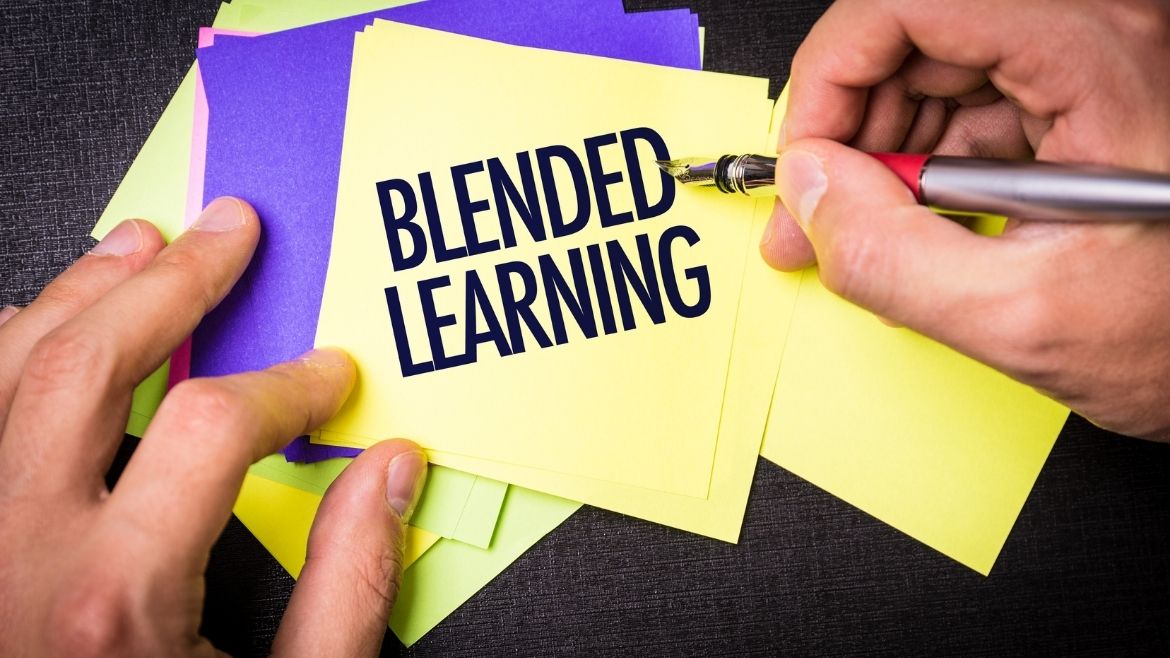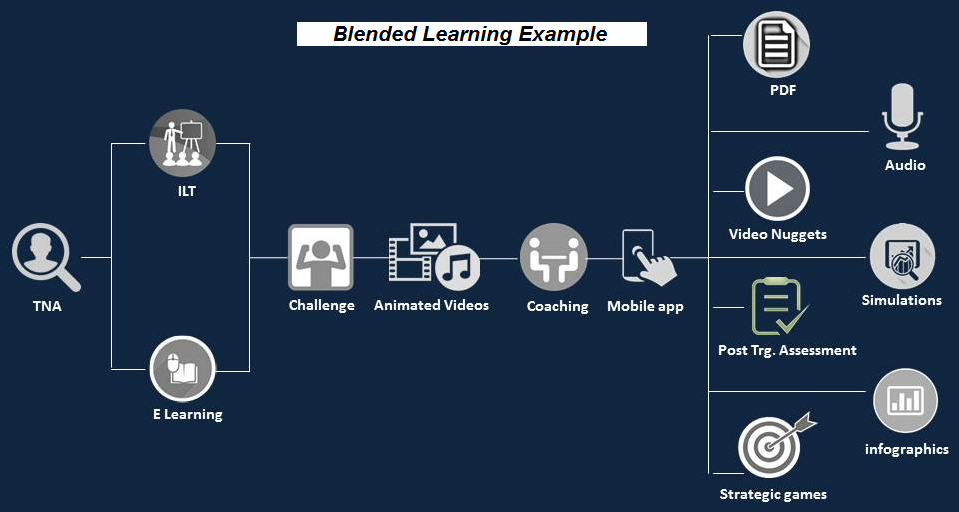
How Blended Learning works?
The process flow outlined above describes how a training team can use a “blended learning” approach while implementing a training program in their company.
Let’s take an example of a “Sales Training Program” to understand this process better.
A company engaged in the sale of air conditioners conducts a TNA of its sales force, the results brings about the need to up skill the sales force in the art of “selling to HNI customers”.

Training team’s “blended learning” approach:
- Since the company’s sales force was spread across the country, it was decided by the training team that the training program will be implemented as a combination of classroom (ILT) & e-learning.
- It was also expected that the sales force would need to be directed in the event that they experience some challenges while using the newly acquired skills in the field, which is why the training team produced brief “explainer videos” on related topic & uploaded the same on company’s LMS, which the sale force could refer to while on the move (both online & offline).
- The training team also planned to conduct “private coaching” sessions for the sales force in order to provide solutions to challenges faced by individuals while on field & to draw up & execute a plan to improve sales performance.
- In addition, at any time in order to test, strengthen or improve sales related knowledge of the sales force, the training team provided the sales force with access to a “mobile application” through which individual sales person could access the related training topic in the form of interactive PDF, assessments, video nuggets, games, simulations & info graphics etc.
To conclude the “blended learning” process is a sequence of phases of “traditional learning” & “e-learning” that alternate over time.
